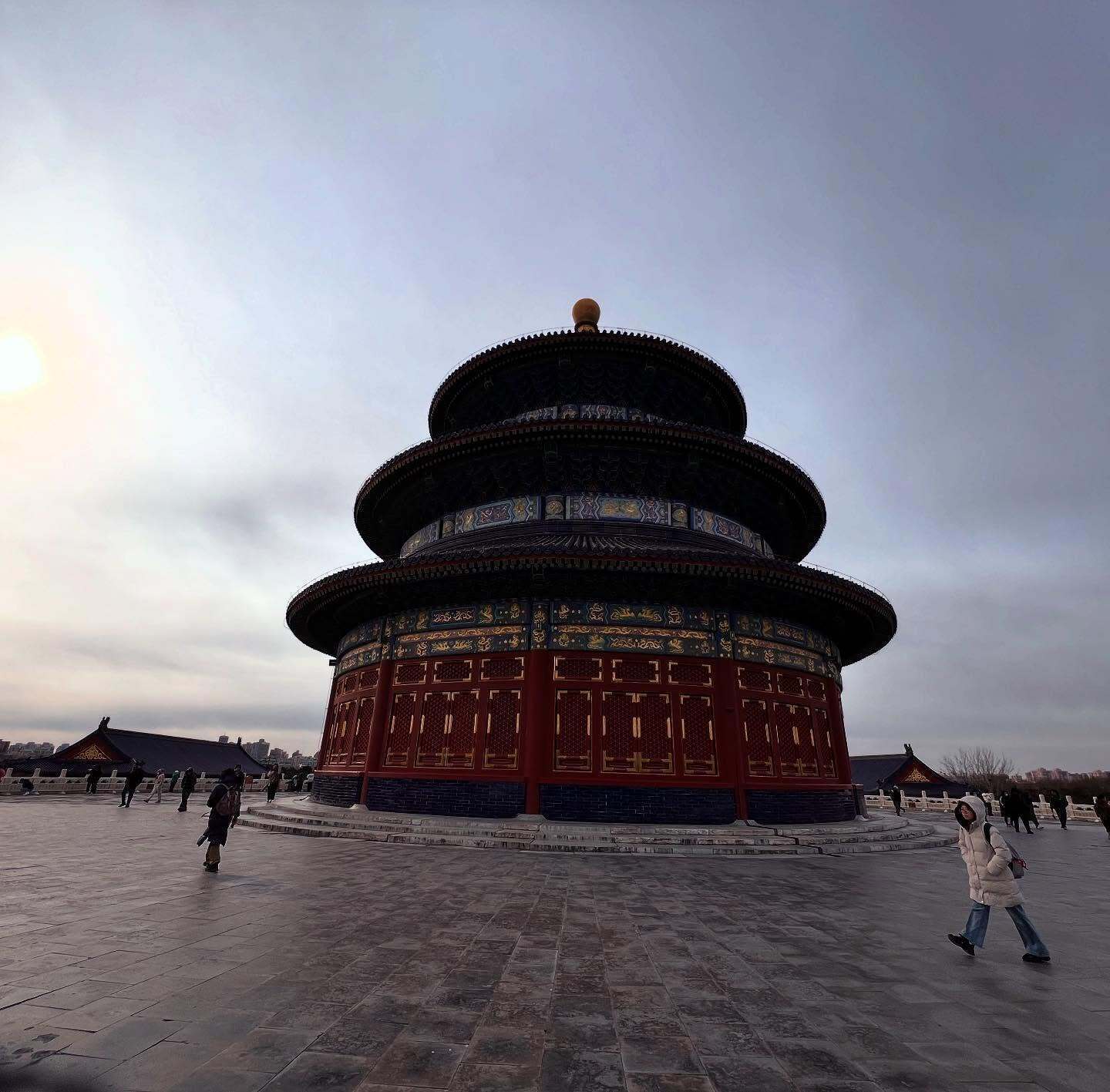China Overview - February to March 2025

This was my third trip to China, Angela’s second, and Owen’s first. Angela and I had visited in 1997 with my (Chinese-speaking) brother and mom in 1997. The main reason for going to this time was to see the Harbin Ice & Snow Festival and see what New China looked like after the economic growth of the past 30 years. Initially, I was a bit worried that it would be ‘ruined’ and that all the real beauty would have been torn down for urbanisation and progress. Gladly, this hadn’t happened; China has moved into the modern era more deftly and comprehensively than I could have imagined. They have maintained their heritage but created a very modern society with high-speed trains, extensive metro systems, and a 5 G-powered, mobile-friendly, nearly cashless society.
Using a guide with a driver
So, in the past, we used a tour agency for most of the trip. This time, we decided to as well. It is nice to have a driver to get you around and a guide to navigate you to the sites you want to see and help you understand what you are seeing. Also, the cost isn’t too bad. Having finished the trip, we could have done it on our own; it would have been a lot harder to get all the trains arranged, pick restaurants, get taxis, and get tickets to venues. In the end, I think we would have seen and done fewer things.
We managed fine with the subway and food in Harbin without a guide, but even getting to a hotel with a map and Chinese name of the hotel was a struggle.
Apps and money
The real issue with solo travel is the lack of good bilingual apps to help. Google Maps (and all of Google) are blocked and, even with a VPN, have little information. Apple Maps is a poor substitute, and Baidu Maps is excellent, but only in Chinese, so it is nearly impossible to navigate. The other issue is paying for things. You need to have WeChat and AliPay up and running to be able to do anything; however, there are times it still fails without a mainland Chinese bank account. So bring some money. Also, if you use a guide and driver, you will need to tip them in cash, so plan ahead - think approximately 100 yuan (£10) per day for the driver and 300 yuan (£30) per day for the guide.
As for apps, we use the following daily:
- AliPay for nearly all purchases, you need set this up ahead of time. To pay, you either show your QR code to the vendor who scans it, or you scan their QR code. I never knew which option a shop was using.
- WeChat for messaging with each other and our guides. Also, in restaurants, it is often the easiest way to order, look at a menu and get that menu translated to English (often it isn’t great as you don’t know ‘Ants walking on a stick’ is really fried eggplant in a black bean sauce with minced pork). WeChat also does the best at translating a printed menu or document. You can pay with WeChat if you set it up; however, I had some issues. If it was an individual, you were paying, and then it would often ask for a debit, which you can’t do as a foreigner. Baidu Translate is great for translating text but even better for translating voice, both for you and your Chinese counterpart. The Chinese mostly know this app and can use it with you to have a ‘conversation’.
- Didi for Uber, like cars/taxis. Didi is cheap and pretty easy if you know exactly where you want to go. You can also pay with AliPay.
- Baidu Maps for maps. We occasionally used this, but it was hard without knowing Chinese characters.
Note: You must install all these before going to China. If you have a VPN, you can do so, but it isn’t as easy.
Mobile data and VPNs
You will want to get mobile data. Wifi is available in many places, but it isn’t great, and if you are outside, it likely won’t work. We used Airalo, which was pretty reasonable and mainly works like a VPN; at least, we had access to many apps and sites beyond the Great Firewall. We paid $28 for 10GB, which lasted us 20 days, but turn off any heavy data using apps like mobile backups on Google Photos.
As for a VPN, you might want to get one for use on mobile data, but definitely for wifi at your hotel. We found that only AstrillVPN seemed to work over wifi, NordVPN, TunnelBear and GoogleVPN just didn’t connect. It is expensive, but you only need it for a month.
Getting around
Most of the larger cities (and most of them are large) have extensive metro systems. We mostly walked or used these. Getting tickets is easy. You can either get a ‘transport card’ on AliPay or Apple Wallet, which allows you to scan a QR code when entering and leaving the station, or you can get a physical ticket at your initial station at a machine. The machines are available in English. To purchase a ticket, you select your subway line and then the end station and pay with AliPay or WeChat.
You can also use Didi for a car, but you must put in a destination, which we struggled to find on their Chinese-only maps.
You can also use a bus, but we haven’t tried this. Apple Maps appeared to give bus directions (but oddly didn’t with subways). You can use the ‘transport cards’ to pay and cash.
Another thing about planes and trains: We were unable to check in online for flights. Also, you cannot use the turnstiles to go to security in airports or to the train platforms; however, your passport is your ticket. At every set of turnstiles, there is a guard on the side that can scan your passport. It works well and is usually quicker than waiting in line.
Hotels
We booked all our hotels before we went via booking.com and agoda.com. We created a daily spreadsheet listing the city and hotel, including what each hotel offered for breakfast, dinner, laundry, etc. Then, closer to the trip, I put them all in Google Calendar so we could know what to expect and easily show our driver the name. I highly recommend this approach as it is quick and easy to look up what’s next and load a map or web page.
For the few hotels with laundry, it was always free, and they had free detergent.
All of our hotels had Western toilets and showers, and a few had baths. They also had free shampoo, soap, and bottled water. The hotels were very clean and modern.
Power
Every power outlet we saw accepted both US two prong (type A) and the Asian two/three angled prongs (Type I)
Language
Very few people spoke good English. Certainly some did; however, we often used our guide to help with hotels and heavily used Baidu Translate for other communication. All the people at hotels and restaurants wanted to help us, so they were willing to make the conversation happen.
Food
Every meal we had was excellent, no matter how cheap or expensive. The food quality has vastly improved in the 30 years since we last were there; it is hard to overstate. Ordering, we often had to tell a waiter that we needed ten minutes to decipher the menus, but it was pretty easy to order and pay, etc. And often they have dishes they are well known for on the first page, so we usually ordered that. Also, you don’t have to tip unless it is an expensive place, and even then, 10% would do.
Costs
Here is a rough guide to what we spent for three adults per day (averaged over 20 days). Bigger cities cost more than smaller ones. I didn’t divide it by three for a per-person cost, as that would be understating costs. For example, we often had two hotel rooms, but many hotels had rooms for three people, usually with a second bedroom.
| Category | ¥ Yuan | $ USD | £ GBP |
|---|---|---|---|
| Breakfast | ¥43.08 | $6.03 | £4.74 |
| Dinner | ¥160.82 | $22.52 | £17.69 |
| Drinks (at a bar) | ¥75.58 | $10.58 | £8.31 |
| Hotel | ¥778.75 | $109.03 | £85.66 |
| Lunch | ¥125.61 | $17.59 | £13.82 |
| Snacks | ¥50.41 | $7.06 | £5.54 |
| Tips | ¥400.00 | $56.00 | £44.00 |
| Transport | ¥18.57 | $2.60 | £2.04 |
| Total per day for 3 adults | ¥1,718.76 | $240.63 | £189.06 |
For the travel company costs, which included four bullet trains, three internal flights, guides for 15 days, and drivers for 17 days, we paid ¥37,650 ($5,271 or £4,141) or about ¥1,882.50 ($264 or £207) per day for three of us.
Visas
You will need a visa to enter China. We were lucky to be able to go into a centre in London. The process was rapid once there. You need to bring:
- a copy of hotel confirmations
- a letter from your travel company saying you are going with them
- your passport, which you leave, as they add a full-page stamp
- an application, which you fill out in a form on the website that takes ages to fill in and asks for a lot of information about where you are staying, etc.
There was no ‘interview’, just a check of the paperwork. You pay and pick up your passports in a few days.
I don’t know if you can do this remotely.
I hope this helps someone.
Read our day by day notes on our 2025 trip to China >
No slideshow images defined in front matter for this page.

Comments
Add a comment